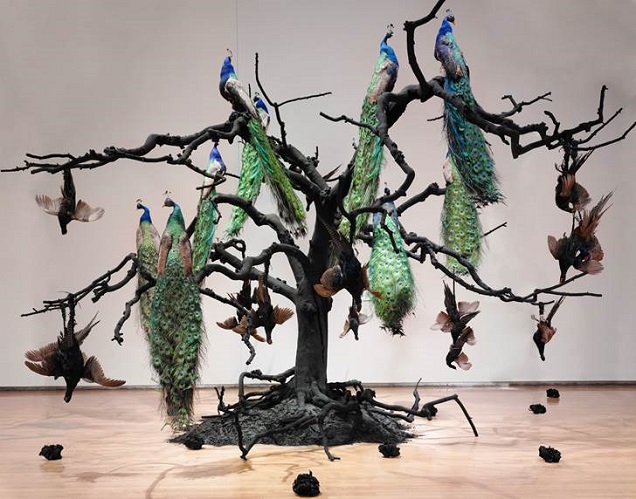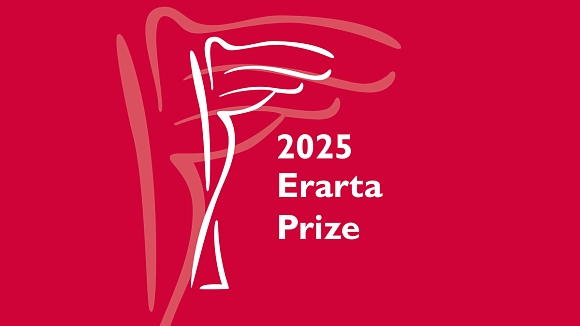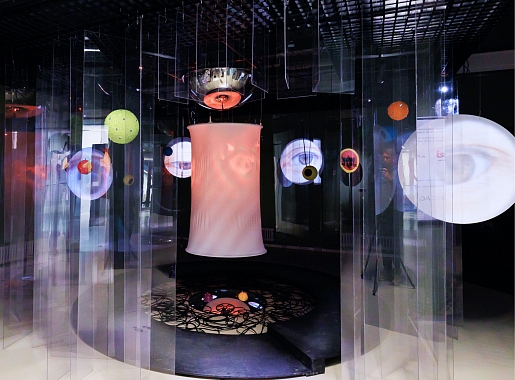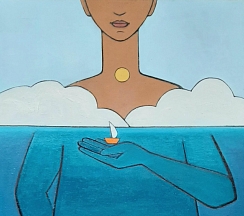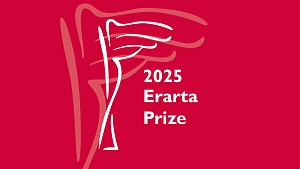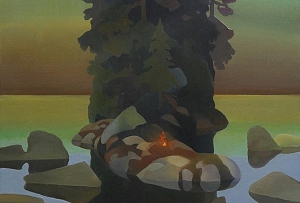“You have to be inventive”. Art education in New York: Interview with Petah Coyne
In our continuing series of interviews about art education in New York, Elena Chestnykh spoke with Petah Coyne — a well-known contemporary American sculptor and photographer.
Petah’s works are in the permanent collections of influential museums and galleries such as the Museum of Modern Art, the Whitney Museum of American Art, the Brooklyn Museum of Art, the High Museum of Art in Atlanta, the Corcoran Gallery of Art, and the Nasher Museum of Art at Duke University. For many years Petah has been teaching at the School of Visual Arts and other universities.
Petah, how long have you been teaching?
I have been teaching since 1988, for what feels like a very long time. For the last couple years I have not taught, as I have been very busy in the studio, but I am coming back this fall and will be teaching one semester. I hope to continue teaching, because I love it.
What is the main task, mission of MFA program?
The mission of the MFA program is to find out what each student’s talent is, to discover their vision and to really bring that vision out by working individually with each student. My goal is to make them see their own work. Every student has an aspect of genius. They don't often know what that genius is because they live with it all the time, and it's very hard for a young person to trust it. As a teacher that’s what I hope my gift is to them, to encourage them to trust their own instincts.
Could you be more specific about what you teach to your students?
One of the things I often do is have them go to The Metropolitan Museum of Art. I instruct them to explore and select a work of art they are interested in speaking about. If they can articulate to me, the other students and themselves what they see in that work of art, then they have achieved the objective. This in turn teaches the students how to talk about their own works. People tend to discuss work in an intellectual way, and I also try to get students to talk about work in an emotional way, from a natural point of view, like breathing.
What do you expect from students? How would you describe your "perfect student"?
I have had several over the years; a lot of whom have done really well. By “well” I mean they continue to work exceptionally hard. I expect students to push their work to the edge. The best students are the ones that make fantastic work, but are also making bad work. Only the ones that are making great work and awful work are the ones who are pushing their work to the very edge. It takes courage to do this – it is hard. But if you don’t have the courage now, you will not be able to have it later, when the stakes are even higher.
The students who I had interviewed told me that they are even more influenced by each other than by professors. Is interaction among students so important?
Absolutely! The connections you make in school will be the connections you will have for years. Your colleagues and your friends are going to inspire and challenge you. It's interesting to have classmates in different genres, literature, music, dance, because all these people are incredibly creative. One summer I taught at Bard College where they have an incredibly diverse program that includes music, literature, filmmaking, sculpture, and painting, and I had to critique all of them. I thought, how can I critique musicians, composers, filmmakers and writers? I didn’t think I would be able to, but after listening to each student, I had the most fascinating dialogues and saw that it all comes from the same place of learning to understand and use your creativity.
I would like to ask you about career prospects for alumni?
I hope that students will go on to exhibit their work. What I try and do with my class is to teach them about applying for grants. There are many grant opportunities that are available to students after they finish school, and many artists aren’t applying. The grants allow you to travel and receive funding that will also allow you time in your studio which of course is very important for producing work and ultimately approaching galleries. Given the opportunity to exhibit in galleries begins a dialogue with the world. That is my first hope for artists. If they cannot get into a gallery right away, as it may take a while, then I would hope they could potentially use teaching as a supporting outlet. Teaching will hopefully allow them to sustain themselves until they can apply for grants and ultimately find representation by a gallery. This is of course if one wants to go the route of entering the gallery system.
Which features of character should students or emerging artists have to achieve success in the modern Art world?
You have to be talented, but you also have to be a little tough or you will get your feelings hurt because there is a lot of rejection. You also have to be incredibly inventive. You need to be just as creative as you are in making your work as you are in figuring out how to get your work seen. Maybe you will not get into all the shows you want, so make your own show. Find a storefront to do a pop up show, include your friends, some mid-career artists and some well-known artists. Creating a mixture with well-known artists - people will say, “Oh gosh, I would love to see that piece,” and this will bring other people in and give your work exposure. If you can’t do a pop up show, try the back of a container and have it brought to the piers. Or a boat, and drive that boat to the shore on a beautiful day near Chelsea. You have to be creative and never get discouraged.
Which place in modern world does a contemporary artist have? Artists can be like magicians by showing us something and making us see it differently; they give us perspectives on the world that no one else can. Political artists show us what’s really important, such as Alfredo Jaar. He poses questions about many important things that challenge people. Artists can also point out the things that are full of hope. The world seems to be in chaos most of the time. The good artists are the ones that are always taking the temperature of the world and grounding their audience.
Could artists influence on society?
They can change the world.
Who is the recipient of contemporary art? Sometimes, the language of the contemporary artist seems so sophisticated that the general public could not understand it.
The world is the recipient of contemporary art. We have to make art that it is understandable, but the world also has a responsibility to make an effort to receive art, both intellectually and emotionally. Sometimes people don’t want to try and understand art, and I think this is because contemporary art gets bad publicity of being too complicated or nonsensical. I think the United States is guilty of this. We have a different history of how we approach art in our everyday lives, and I think because of this we sometimes aren’t able to have open minds about trying to understand it, or to even feel comfortable with just looking and being okay with not understanding. Sometimes wall text next to a work of art ends up over-explaining things and telling people how to think. I think if we were able to be more open, art would have more of an opportunity to really move people and teach them something.
Do you think art must be more understandable without words? Just with emotion?
Absolutely. Just leave it be and trust that people can take away their own meaning of the work.
